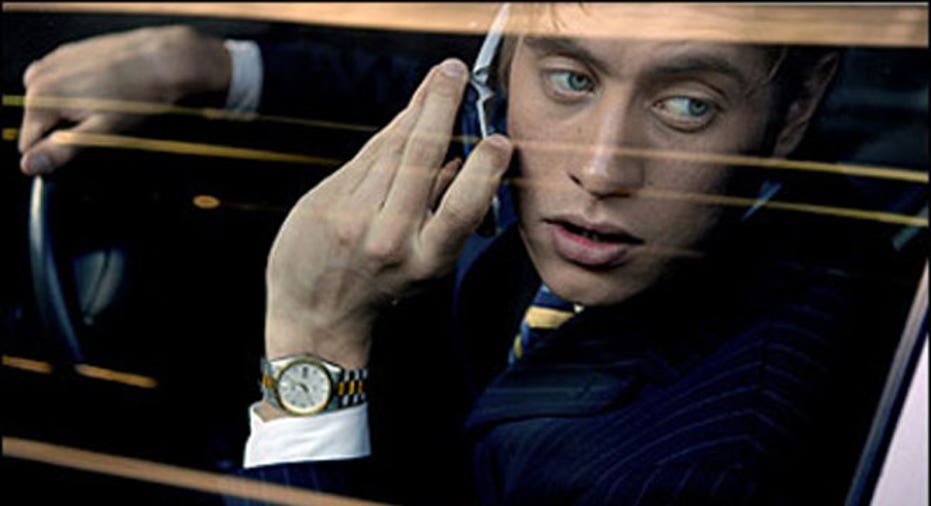Stop Your Aggressive Driving, It's Costing You Money

According to a new survey from Insure.com, the most expensive 2014 car to insure in the United States is the $110,000 Nissan GT-R Track Edition, which requires a few bucks less than $3,200 in premiums to cover for 12 months.
The super car is better known in some quarters as "Godzilla," for it is a monster that emigrates from Japan. Sporting a twin turbocharged V6 engine that boasts 545 horsepower, the lighting quick GT-R Track Edition rockets from zero to 60 in a scant three seconds, and touches speeds of 190 to 200 miles per hour.
So what kind of person buys and drives Godzilla? A well-heeled one no doubt. But also a guy, for it is inevitably a male buyer, who just adores aggression.
We're not talking just about aggressiveness on the track, either. GT-R buyers don't shell out that many simoleons to dawdle in the slow lane when running for a quart of milk at the local convenience store.
And therein lies the reason for the high cost of insurance. It's not just the GT-R's many carbon components, which if damaged in a wreck can only be replaced, never repaired, that propels its premiums into the auto insurance cosmos.
"It's flat-out brilliant to drive," Santa Barbara, Calif.-based John Pearley Huffman, who writes for Car & Driver, told me recently. "It's driven by people who like to drive fast, and it's expensive . . . It's a fantastic car, and I believe it to be an easy-to-handle car. But the consequences of screwing up at 150 miles per hour are radically different than screwing up at 50 miles per hour."
Ubiquitous aggression
In the working class neighborhood I call home, I can't recall ever seeing a GT-R. People here are a bit too concerned about making their next mortgage note and funding Friday's family dinner at Red Lobster to shell out for a six-figure super car. But I glimpse drivers on a daily basis who'd be right at home behind the wheel of one. These motorists, male and female, are in such hurry to get where they're going that speed limit signs might just as well read "Any Speed You Like."
The hallmarks of these domineering drivers are known to us all. They're laying rubber at the sight of a red light turning green. They're throttling to a stop sign or red light so they can stomp the brakes and skid 250 feet to a halt. They're the ones -- on dry pavement or black ice -- who tailgate so near your rear bumper you can count their inflamed facial pores in your rear view mirror.
You'll see them abruptly sliding across multiple lanes to reach three car-lengths of open road, turning right from the left lane, cutting off other motorists without so much as a turn signal, and appearing intent on making your stretch of asphalt into an open-road triage center bathed in the flashing lights of first-responders.
And, as I noted, speed limits don't apply when they're in the driver's seat. When I hear yet another traffic report about an eight-car pileup, featuring overturned vehicles, rolled-over buses and jackknifed semis, I inevitably say to myself, "Well, at least no one was driving above the speed limit."
Yeah, right.
High aggression, high costs
Watch the countless aggressive drivers on the byways, and you begin to sense how little saving money means to so many American motorists. These clearly aren't people carefully searching for a high-yield savings account, the best credit cards or strategies to better save for retirement.
Let us count just some of the ways aggressive driving can put the raging road warrior into the poor house.
Insurance costs. You may recoil at the notion of spending an average of $3,167 a year on auto insurance, as GT-R owners do. But your insurance will bolt northward with every speeding ticket and reckless driving ticket -- which are expensive in and of themselves -- and accident you rack up. Studies show a reckless driving ticket sends car insurance rates up by 22 percent. Wouldn't punching a speed bag be a less expensive way to get out your aggression?
Gasoline costs. According to a recent article by Laura Mauney in Renewable Energy World Magazine, tailgating requires hard-braking and re-acceleration, both of which unnecessarily burn fuel. If these maneuvers waste 10 percent of gas in a tank, that will add up to $9 for every gasoline fill-up of a 25-gallon tank at today's gasoline prices. If a tailgating motorist fills up every week, that brings the unnecessary cost to $460 per year, or eight additional 25-gallon fill-ups yearly.
All in all, jackrabbit starts and hard-braking can increase fuel consumption by up to 40 percent, Mauney states.
Wear and tear. Hard-braking is associated with earlier demise of brake pads and drums. On the whole, aggressive driving just wears down a vehicle more quickly, resulting in more frequent visits with the mechanic for costly repairs.
And don't forget to throw in the cost to society -- meaning all of us -- of thousands of needless motorist and pedestrian injuries and deaths each year, and the impact on the environment of unnecessary auto emissions.
When you do, it's evident that about the only thing more frightening than the high cost of aggressive driving is a surprise visit by Godzilla.
The original one.
The original article can be found at FiveCentNickel.com:Putting the brakes on aggressive driving's exorbitant cost